
Airtable Pricing vs. Bika.ai Pricing: Which is More Advantageous for Accountant?
When choosing a tool for Invoice collation reminders, what really matters?
When an Accountant is on the hunt for a tool to build automated workflows for Invoice collation reminders, several factors should come to the forefront of their mind. It's not just about the tool meeting functional requirements; pricing plays a crucial role too. Airtable is often considered for automation, but does its pricing live up to expectations? Let's explore and compare Airtable and Bika.ai across multiple aspects to make a more informed choice.
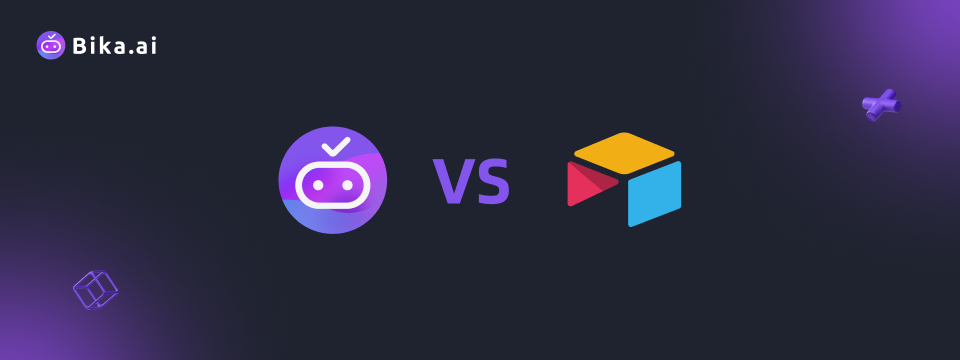
What are Airtable and Bika.ai?
Airtable is a cloud-based platform that combines the simplicity of a spreadsheet with the capabilities of a database. It's designed for organizing content, tracking projects, and managing tasks. However, it has its challenges. New users might find the base structure complex, it has limitations with large datasets, and its automation features aren't as user-friendly.
On the other hand, Bika.ai is a no-code AI automation database. It offers an easy-to-use platform with features like AI-Agent-enhanced CRM, marketing automation, project management, BI, and ERP at an attractive price. Bika.ai stands out with its plug-and-play templates and ability to handle large data volumes effortlessly.
Airtable vs Bika.ai: Key Features At a Glance
Airtable is suitable for straightforward tasks and smaller databases. Bika.ai, on the contrary, excels in handling complex tasks and larger data volumes, leveraging AI automation to simplify various business activities.
| Feature | Airtable | Bika.ai |
|---|---|---|
| Pricing | Free provided, paid plans from $20/user/month | Free provided, paid plans from $9.99/user/month |
| Platform Type | No-code database | No-code AI automation database |
| Ease of Use | Base structure is geeky for non-tech users | Directory tree is easy to use and user-friendly for general users |
| Records per Database | Up to 125,000 records per base for Business plan | Up to 1,500,000 records per database for Team plan |
| Automation | Basic automation capabilities with limited triggers and actions | Advanced automation capabilities with extensive triggers and actions |
| Template | Templates don’t include automation capability; no automation publish and share | plenty of plug-and-play AI automated templates with preset content; supports automation publish and share |
| Storage | 100 GB of attachments per base | 800 GB per space |
| API | Limited APIs | API-first platform making every feature an integration endpoint for automation |
Pricing Comparison of Airtable vs Bika.ai
Bika.ai provides a generous free tier and cost-effective paid options that offer superior value compared to Airtable.
Airtable's pricing can be a burden for larger teams and extensive usage. Bika.ai, however, offers competitive pricing without sacrificing features and capabilities.
Airtable’s price plans
| Plan | Features | Price |
|---|---|---|
| Free plan | Unlimited bases 1,000 records per base Up to 5 editors 1 GB of attachments per base 100 automation runs Interface Designer | Free |
| Team plan | 50,000 records per base 25,000 automation runs 20 GB of attachments per base Standard sync integrations Extensions Gantt and timeline view Expanded color, formatting, and calendar options | $20 per user per month |
| Business plan | 125,000 records per base 100,000 automation runs 100 GB of attachments per base Premium sync integrations Verified data Two-way sync Admin panel SAML-based single sign-on | $45 per user per month |
| Enterprise plan | 500,000 records per base 500,000 automation runs 1,000 GB of attachments per base On-premises sync integrations Enterprise Hub Enhanced security and admin controls Enterprise API Extension and integration management Audit logs and DLP | Pricing on request (estimated to start at $70 up to $100 per user per month) |
Bika.ai’s price plans
| Plan | Features | Price |
|---|---|---|
| Free plan | 5GB of storage 10,000 records per database 200 automation runs Missions, Reports, AI Summary, and more Free Send Bulk 100+ SMS / 1000+ Email OpenAPI Access | Free |
| Plus plan | 50GB of storage 100,000 records per database 30,000 automation runs Permissions control More database fields, automation actions More free SMS, Email, Reports, Missions, AI | $9.99 per user per month |
| Pro plan | 200GB of storage 500,000 records per database 60,000 automation runs IM / Email Support Team / Organization Advanced OpenAPI and AI models | $19.99 per user per month |
| Team plan | 800GB of storage 1,500,000 records per database 100,000 automation runs Audit Logs Full integrations, automations Advanced Permissions | $39.99 per user per month |
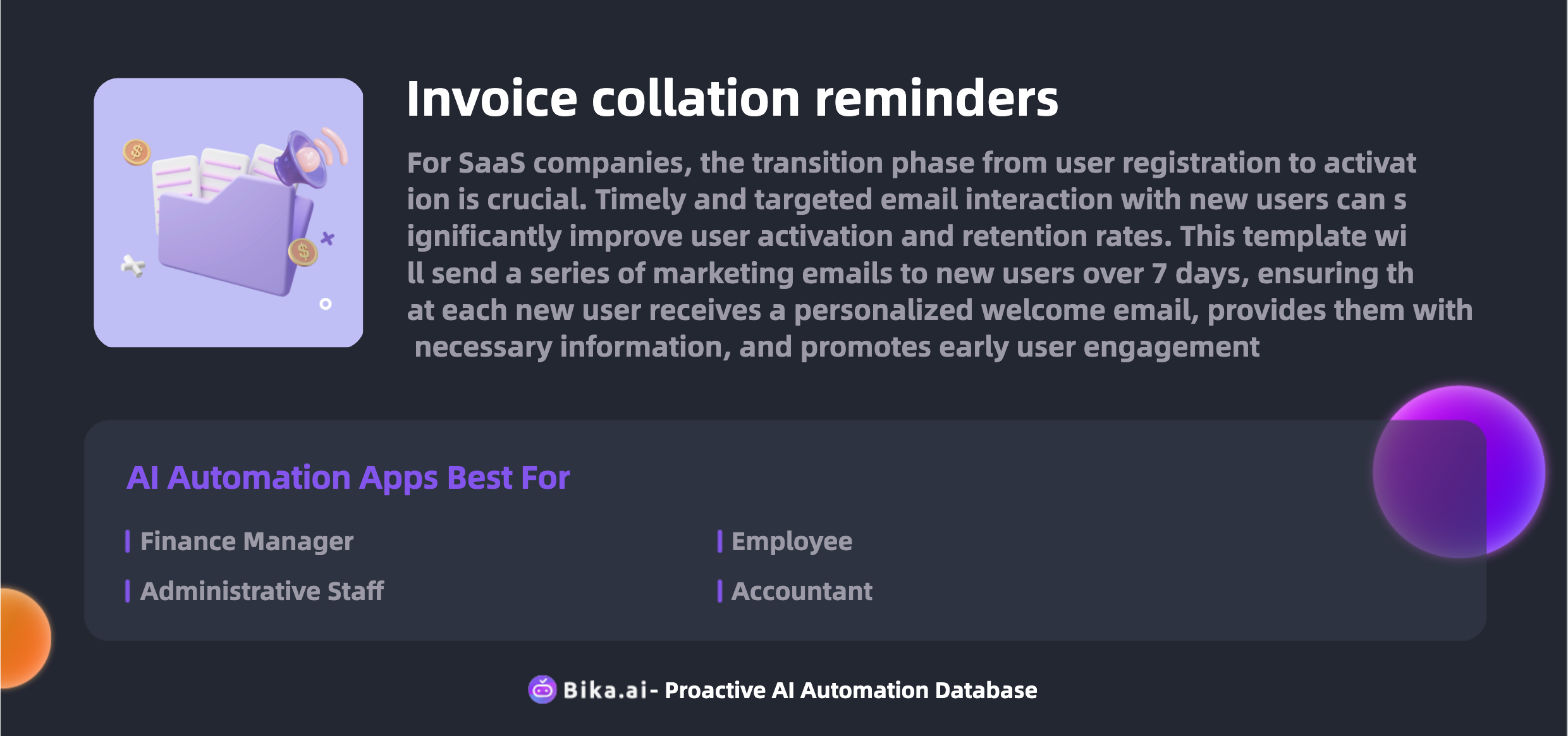
Why Choose Bika.ai Over Airtable for Accountant?
For Accountants, Bika.ai offers numerous advantages over Airtable. The Invoice collation reminders template is a game-changer. It increases efficiency by automating tasks such as sending monthly invoice reminders, collecting invoices from employees, and tracking submitted invoices. It saves time, reduces errors, and allows for customization to meet specific needs.
Specific examples include:
- Sending monthly invoice reminders ensures timely submissions.
- Collecting invoices from employees simplifies the collation process.
- Tracking submitted invoices keeps everything organized.
This template also offers convenience, helps in cost savings, and simplifies administrative tasks. It improves financial reporting, facilitates tax filing, and encourages prompt invoice submission. It reduces the administrative workload, enhances financial accuracy, and coordinates well with departments.
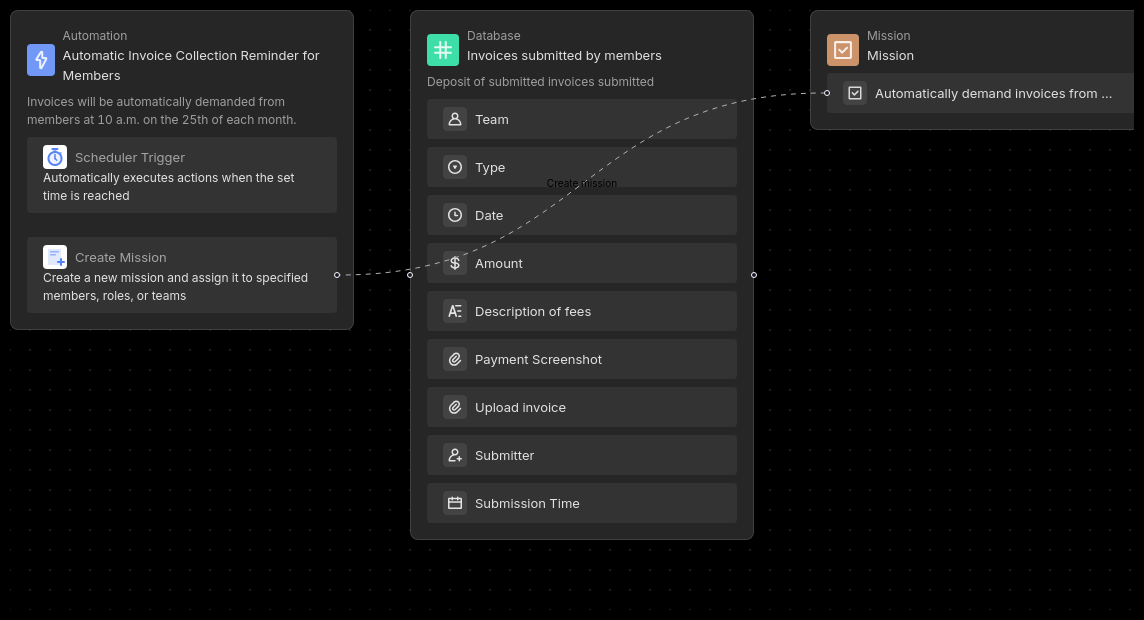
How to use Bika.ai's Invoice collation reminders template?
To facilitate the work of finance and administrative staff, the system will automatically remind company colleagues to collect invoices and submit applications on a regular basis according to your settings. In this way, colleagues can quickly take photos and upload invoices, helping finance and administrative staff to quickly collate invoice data for subsequent reimbursement or tax filing.
This template includes a database and an automation task.
- Automation Task "Automatic Invoice Collection Reminder for Members": Automatically reminds members to collect invoices at 10 AM on the 25th of each month.
- Database "Invoices Submitted by Members": Used to store the invoice information submitted by employees.
The usage steps are as follows:
1. Install the Template
Install this template into your Bika Space. If you need to manage multiple projects simultaneously, you can install this template multiple times. One template corresponds to one project.
2. Configure the Automation Task
Enter the edit interface of the Automatic Invoice Collection Reminder for Members automation task, where you can modify the trigger conditions and execution actions. If not set, the default is to send reminders at 10 AM on the 25th of each month.
You can find the Automatic Invoice Collection Reminder for Members automation task on the "Settings" page, click the "Edit" button, and set the reminder time under "Trigger Conditions."
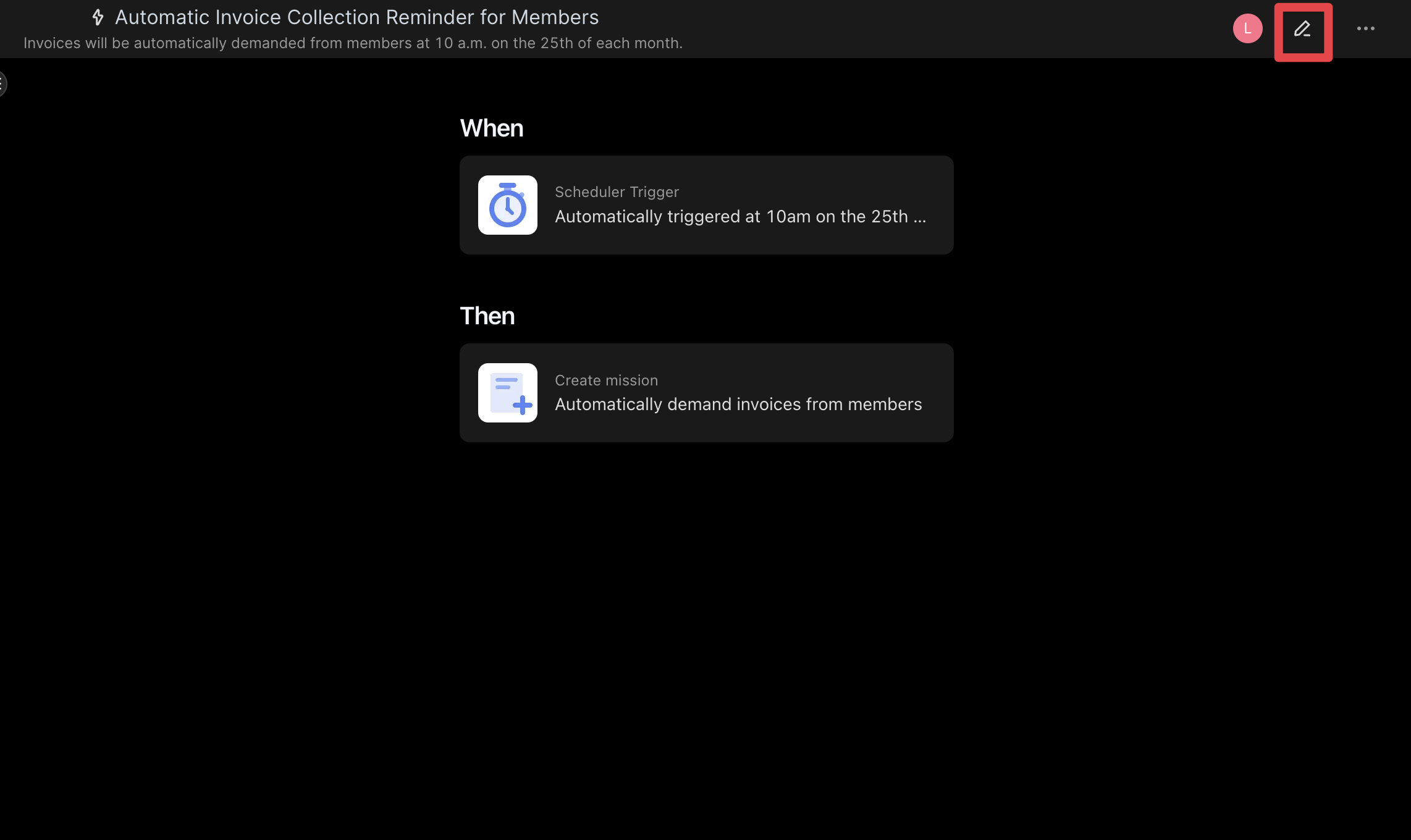
3. Test the Automation Task (Sending Collection Reminders)
We have already enabled the Upload Invoice automation task by default. You can check if the reminder notification is successfully sent at 10 AM on the 25th of each month. You can also click "Run Now" to test if you receive the reminder notification.
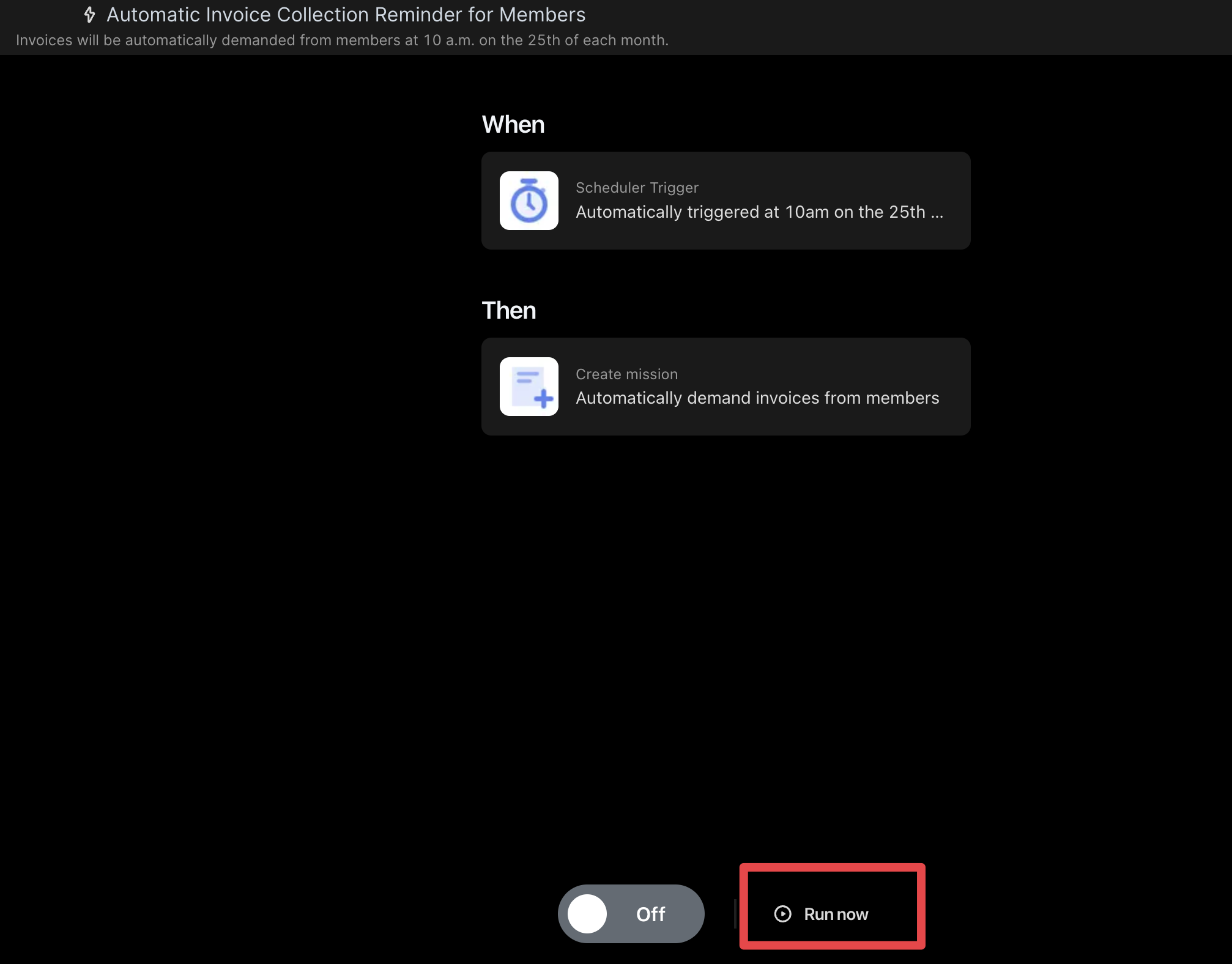
4. Submit Invoices
Employees can submit invoices through the received collection reminder, and the system will automatically add the invoices to the Invoices Submitted by Members database.
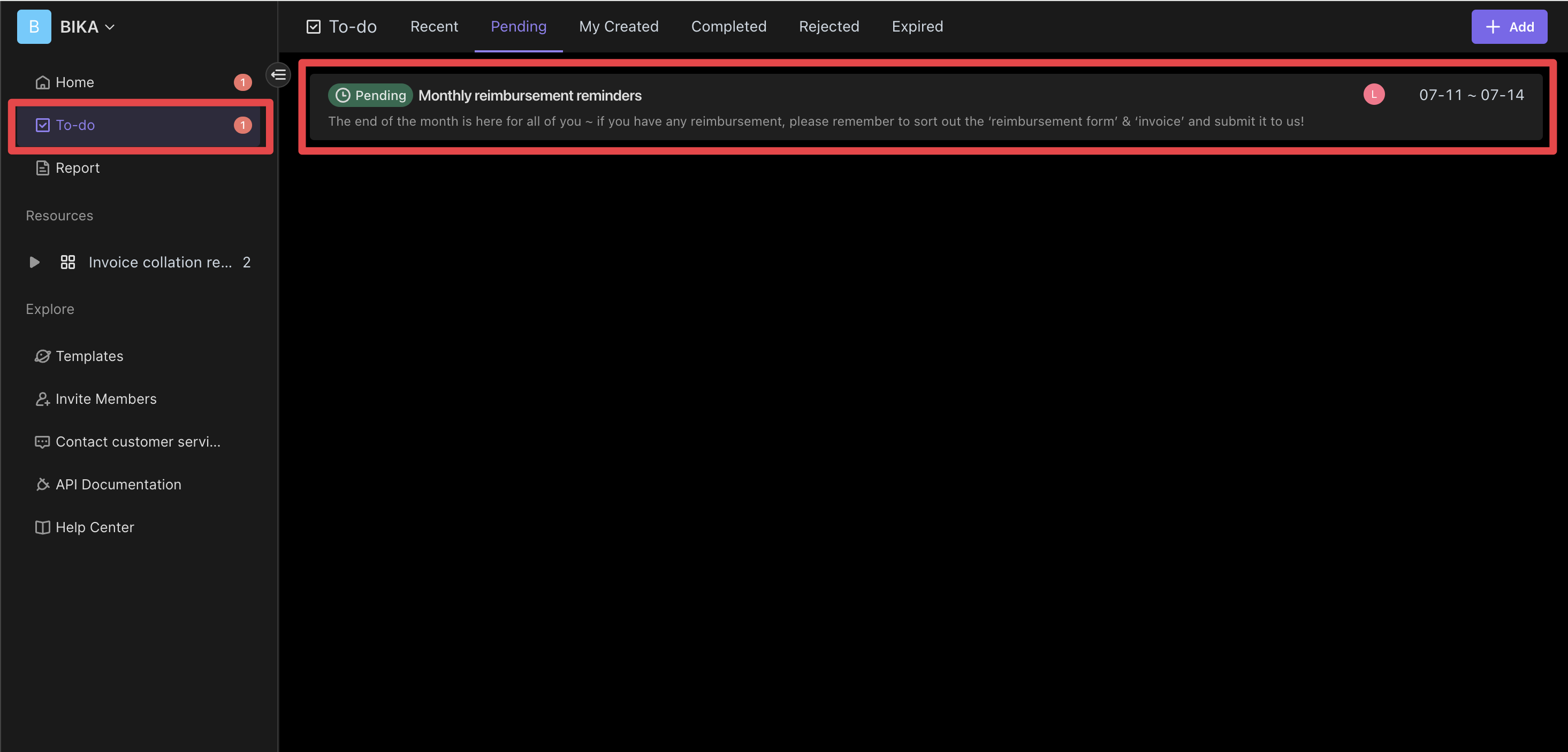
5. View Submitted Invoices
All submitted invoice information will be stored in the Invoices Submitted by Members database, where you can view and manage it at any time.
This template is suitable for various roles, including Finance Managers, Administrative Staff, Employees, Accountants, Team Leaders, and HR Managers.
Common questions and their answers:
-
How to Change Reminder Time and Frequency?
You can modify the trigger conditions set time and frequency in the automation task edit interface. The automation task executes according to the set time and frequency and then sends reminder notifications.
-
How to Add New Invoices to the Database?
Open the
Invoices Submitted by Membersdatabase, click "Add Record" in the toolbar to add new invoices. Alternatively, you can submit through the received task reminders, and the system will automatically add the invoices to the database. -
What if I Want to Stop Automatic Reminder Sending?
You can turn off the switch on the automation page to stop automatic reminder sending.
-
How to View and Manage Invoice Data?
All submitted invoice information will be stored in the
Invoices Submitted by Membersdatabase, where you can view and manage it at any time.
Conclusion: By using Bika.ai's Invoice collation reminders template, Accountants can solve their specific challenges and streamline their workflow efficiently.

Recommend Reading
- Data Automation with Bika.ai: Unlocking New Potential for Facebook Post Automation in Optimize posting schedule
- Bika.ai vs Airtable: To email data analysis
- Airtable Pricing vs. Bika.ai Pricing: Which is More Advantageous for Send birthday anniversary wishes?
- Airtable Pricing vs. Bika.ai Pricing: Which is More Advantageous for Online teaching?
- Data Automation with Bika.ai: Unlocking New Potential for YouTube Creators with YouTube Publishing Process Automation
Recommend AI Automation Templates
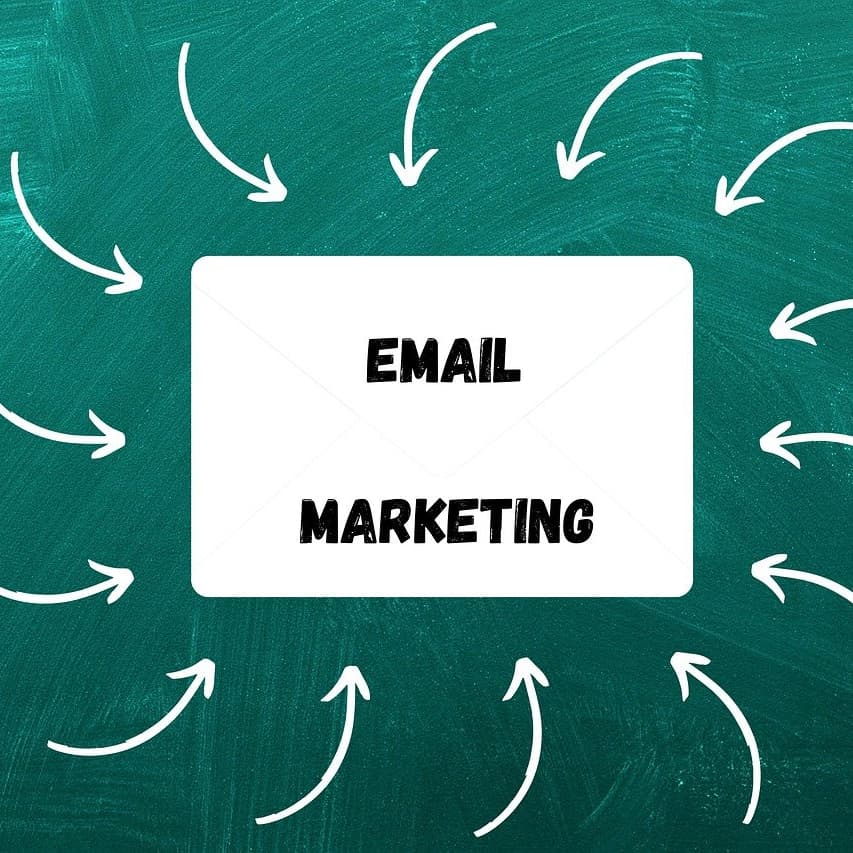

Coming soon


